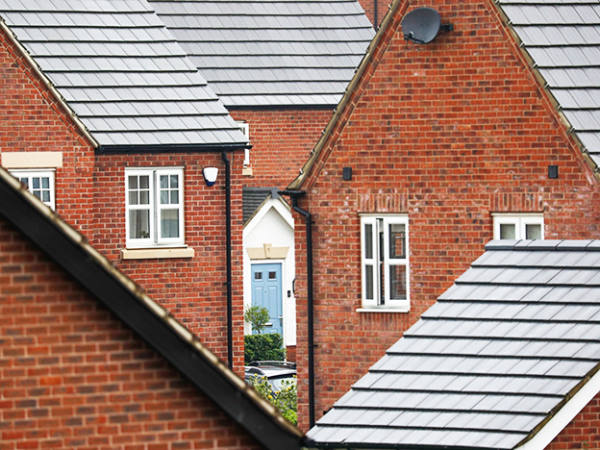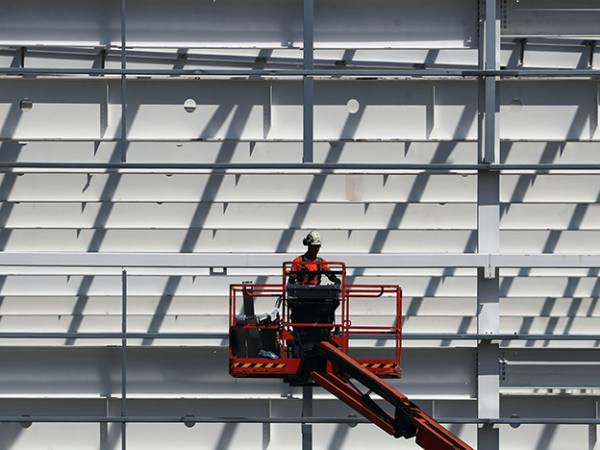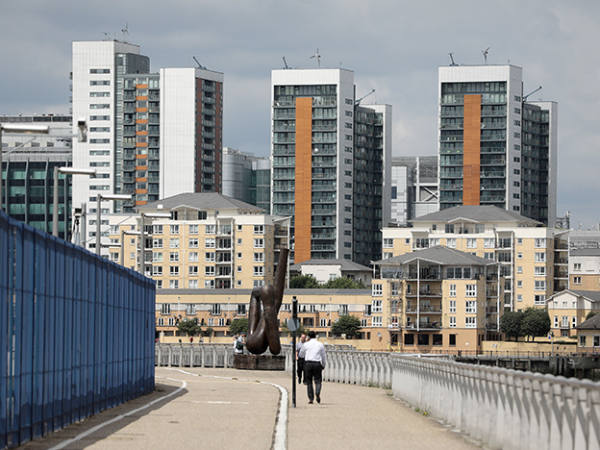The outline of the UK housing crisis is well known. Years of unbroken house price growth has pushed the cost of the average English home up to around nine times average annual earnings, compared with 3.5 times in 1997. The supply of homes available to buy rather than rent remains well below demand, while 15 per cent of the homes that do get built do not meet the government’s decency standards. In short, British housing is expensive, scarce and often poor quality.
The nation is not alone in that regard – and nor will it be alone next year, when prices are predicted to fall notably. With interest rates on the rise, the global housing market is at a "tipping point", in the words of the International Monetary Fund's latest financial stability report. House price growth is cooling, or going into reverse, in most the major markets of the world. From Australia to South Korea, the US to Europe, homeowners face an uncertain time in 2023.
A slump in house prices might look like the market correcting itself, but even a severe correction would not solve all of the underlying and connected issues with UK housing. So what will? Successive British governments have tried and failed to get to grips with housing policy, but such decisions remain politically fraught at best. Other countries, while they may be in the same boat in the months ahead, have taken very different approaches to housing delivery.
Four particular countries offer a veritable mix of ideas: Singapore, Japan, the Netherlands and France. Each sees the issue of housing as a different problem and therefore comes up with a different solution.
In Singapore, a lack of housing is solved by government intervention, while in Japan it is by relaxing the planning system. The Netherlands chooses quality over quantity, while France isn't so much addressing the issue of a housing shortage as it is making neighbourhoods nicer places to live.
Each solution offers a glimpse into a different style of living – but also comes with its own drawbacks.
Singapore – Home ownership for all
Cramming 5.64mn people onto an island less than half the size of London was never going to be easy. Yet, the Singaporean government has managed to do just that. And where only half of Londoners own their homes, nine in 10 Singaporeans do.
This housing delivery miracle is the direct result of arguably the most ambitious and extensive government housing delivery system in the world: the Singaporean Housing & Delivery Board (HDB). Under the system, HDB flats are built by the government and sold directly to citizens on 99-year leases. This gives flat-owners security for their entire lives, but also allows the government to take flats back when citizens die and resell them.
Because 78.3 per cent of Singaporeans live in HBD flats, the state has near complete control over what housing does get built and where in the country. This has been achieved, in large part, because of the strength of the Singaporean state. Where Western democracies are forced to compete with multiple conflicting interests, the Singaporean government – though it too is part of a democracy – is much more autocratic. The ruling People’s Action Party has the majority of seats in the Singaporean parliament and it has done so since Singapore’s inception.
But cracks are emerging in housing policy. Reuters reported in August this year that, due to material and labour shortages hampering the government’s ability to deliver homes fast enough, a lucrative resale market has emerged in the city whereby HBD flats were being sold for in excess of S$1mn (£604,000) for the first time. The HBD in response referred to previous government statements on the matter: it is planning to ramp up delivery.
There are other notable features of the city state's property market, including tight restrictions on foreign ownership, as well as a something akin to a land value tax. Homeowners pay an annual property tax based on a 'yearly value' of real estate – a figure that is calculated based on a property's hypothetical rental income.
As it stands, Singaporeans still enjoy one of the most equitable housing markets in the world and ownership rates remain high. However, if the Singaporean government cannot meet demand with enough supply, there is an argument for the state to loosen its grip. That has certainly been the case in Japan, where the private sector has had no problem delivering enough homes for its citizens.
Japan – Loose planning, quick building
In the district of Umeda in Osaka, the enormous Japanese conglomerate Hankyu Hanshin (JP:9042) has a plan so ambitious that it would make any Western property developer’s jaw hit the floor. The company is building a City of London-sized financial district from scratch, complete with shopping malls, hotels, offices, flexible working space, residential apartments and two new train stations to boot. Walk around the area and almost everything you see has been built by Hankyu Hanshin in the past decade.
The scale of the work is made possible by the permissiveness of the Japanese planning system. Areas are zoned according to commercial or residential development but, beyond that, companies and individuals can more or less build what they want. 'Nimbyism' is therefore limited and the result is rapid and rampant development.
This means that companies such as Hankyu Hanshin can build entire districts with little opposition, but it also means during the country’s 1990s boom period the country developed a significant glut of housing. According to Andre Sorensen, an urban geography professor at the University of Toronto Scarborough, the abundance of lower quality housing in Japan – of the sort that Western countries’ planning standards would not allow for – has helped it to practically eradicate homelessness.
The numbers involved are unfathomable when compared with many Western countries. According to the latest government statistics, a mere 3,824 people are registered homeless in Japan despite the country having a population of 126mn. Put another way, just 0.003 per cent of Japanese people are homeless – a figure small enough to be a rounding error. On a percentage basis, the UK has around 133 times more homelessness than Japan. Even Singapore has seven times more.
However, there are several caveats to Japan’s housing miracle. The first is the quality of the homes built. Sorensen says the laxness of the Japanese planning system is such that there is no standard requiring housing to have windows or even a toilet. “If you wanted to take a garden shed and rent it out as an apartment in your back yard, in Japan you can,” he says.
In practice, he says that the vast majority of Japanese people will insist on such home comforts before renting or buying – a testament to market powers rather than regulation. But market forces are also causing rents and house prices to increase in the affluent, well-located and well-built areas of Japan, according to Sorensen, as they do in many Western countries. He points out that, while it is true that there are many empty homes in Japan, those homes are empty for a reason.
Sorensen says the main reason the country has so much available housing and minimal homelessness is not due to the planning system, but rather its declining population. Since 2015, Japan’s population has fallen 1.25 per cent. Over the same period, the UK population has increased by 3.1 per cent.
Sorensen says that this has created a different kind of housing crisis in Japan. “A lot of vacant housing that leads to empty buildings where garbage is accumulating and empty shops and empty apartments that bring down the neighbourhood: that’s the [Japanese] housing crisis,” he says.
Clearly, Japan’s laissez-faire planning system has not solved all of the country’s housing issues and has created some problems of its own, too. It is worth bearing that in mind when, in the UK, groups such as the Home Builders Federation argue that simply loosening the planning system will unlock development and make better use of available land (see chart). The UK government's recent attempts to liberalise planning rules have also encountered criticism from within the Conservative party itself, specifically from MPs fearful of the backlash they might experience from voters that adopt a 'not in my backyard' attitude.
Yet, instead of loosening the planning system, what if the UK were instead to make it stricter? What would the UK planning system look like if it focused on higher-quality housing rather than on sheer numbers?
The Netherlands – Going in circles
Cycle for half an hour south-east of central Amsterdam, through its narrow cobbled streets and canals, and you’ll come across a development that, from the outside, does not immediately stand out. However, look closer and you’ll see why this residential complex in the district of Ijburg has won an award for being the most sustainable housing development in the world.
Back in 2020, when developer Amvest's housing project was still in its design stage, it was given the top marks by real estate sustainability accreditor BREEAM, which praised its “sound but innovative technical solutions, widespread engagement and broader community benefit”. The project, known as Jonas, is due to be finished by the end of this year and will provide 273 homes for rent and for sale.
The building is sustainable because of a series of sensible and common sense choices: triple-glazed windows, solar panels, energy-efficient design, high-quality materials and good-sized living spaces. These are all things which exist in plenty of buildings around the world. Jonas pulls all of these ideas together to create a residential development that is of a better quality than even some of the most expensive housing developments in the UK. And it is emblematic of how the wider Dutch real estate market operates.
A quick look at those singled out by BREEAM awards in other years makes it clear that real estate projects, companies and individuals from the Netherlands are overrepresented, especially considering it is a country of just 17.8mn people. An oft-cited reason for this is the relative strictness of planning policy and building standards within the Netherlands.
To give just one example, the Dutch Ministry of Economic Affairs and Climate Policy's energy efficiency obligation requires “organisations in the Netherlands that use 50,000kWh of electricity or 25,000 cubic metres of natural gas (or equivalent) or more per year to take energy efficiency measures with a payback period of five years or less”. Put another way, if any product exists that is more energy efficient than the products a developer is currently using in its real estate portfolio, the developer has to make the switch if the new product could make them their money back within the next half decade.
On a macro level, the Dutch government is also one of the world's few to commit to becoming a ‘circular economy’ – whereby every primary resource in the economy is recycled in some way and nothing is wasted. In 2016, it announced a target for the country’s economy to be 50 per cent circular by 2030 and fully so by 2050. For real estate, this means many developers are using recycled building materials. When using new materials they ensure they are of a high enough quality that they can be recycled. A Dutch tech company called Madaster has even developed a ‘building materials passport’ to help developers in this process.
DUTCH ROUNDABOUT: THE NETHERLANDS' TIMELINE FOR A CIRCULAR ECONOMY | |
Year | Action |
2016 | Government introduces plan for 'circular' economy |
2017 | 180 government and industry parties sign a raw materials agreement outlining how raw materials should be used |
2018 | Signatories agree that the five key 'transition agendas' for a circular economy are plastics, consumer goods, manufacturing, construction and biomass |
2019 | Government introduces circular economy plans for its own internal work, including making sure all its real estate assets are circular and carbon neutral by 2030 |
2020 and 2021 | Government twice updates the implementation programme in order to help hit targets |
2030 | Date by which the Netherlands is targeting a 50 per cent reduction in primary resource usage |
2050 | Date by which the government is aiming to have achieved a fully circular economy |
It is hard to see the UK, and the UK real estate sector, being as willing as the Netherlands to take this tack. Developers already complain that onerous restrictions on development make it unviable, and say that this is why housing construction rates remain relatively subdued.
There could be a middle ground. In France, rather than completely rewrite the planning rulebook, the emergence of a different idea stresses how individual cities can improve housing and community life in a much shorter timeframe.
France – The ‘15-minute city’
Most cities around the world profess to offer a degree of convenience to their residents. But that convenience can typically only be achieved courtesy of some form of transport. For most, it remains impossible to travel from a house to shops or to work without getting on public transport or getting in a car.
This, according to French academic Carlos Moreno, is the fault of bad urban planning. In an ideal world, Moreno argues, communities should be built so that all the essential services a person needs are within a 15-minute walk. This, he says, would create tighter knit communities, reduce pollution and make the places we live better.
But the ‘15-minute city’ is not proposed as a way to build new communities and new homes. Rather, Moreno suggests ways in which the communities which already exist can be made more liveable, healthier and equitable. As he put it himself in a recent TED talk, he is “offering a concept of cities which goes in the opposite direction of modern urbanism”.
His idea has had some traction in his native Paris, where socialist mayor Anne Hidalgo used the 15-minute city concept as a key pillar of her election campaign. In practice, it has meant a focus on increasing the number of services available in walking distances from where people already live by maximising the use of space, such as by using school playgrounds as parks during weekends, and school buildings as social meeting spaces after school hours.
There are criticisms. To start, some worry that, while it might prove ideal for some neighbourhoods, it would not deliver the same results for others – further increasing the inequality prevalent in so many modern cities. Another is that by travelling “in the opposite direction of modern urbanism”, Moreno and his ilk are abandoning so much of what makes cities like London, New York and even Paris so well-liked to begin with.
The core business and leisure districts of those cities are what gives them their creativity and vibrancy. By focusing on the fringes, you run the risk of losing the core, the thinking goes.
Moreno says he is not against the concept of the city, and argues that with the right planning and the right investment, any neighbourhood can work as a 15-minute city.
“Don’t get me wrong – I am not angling for cities to become rural hamlets,” he said in his TED talk, recognising the dynamism and creativity of cities. “But we need to make urban life more pleasant, agile and flexible.”
Of course, it is not as simple as Moreno makes out. Pushes to make London more "pleasant, agile and flexible", via tweaks rather than wholescale redevelopment, have been met with a lot of resistance. In Soho, the pandemic-era decision to move restaurant and cafe tables onto streets was widely praised by visitors, but residents now want their streets back. Central London residents also helped to nix plans to pedestrianise Oxford Street. And that is putting aside the question of affordability entirely.
Ultimately, the pushback against Moreno’s ideas and the praise for them echo the pros and cons of all solutions to the housing crisis. Any solution will have its drawbacks, and there is no real way of knowing how severe they will be until the idea is put into practice.
What is for certain, though, is that no capital city in any of these countries has been able to fully solve the problem of rising house prices. London continues to be head and shoulders above the rest of the UK in terms of unaffordability; Amsterdam has been labelled one of the riskiest housing markets in the world, where offers of 30 per cent over the asking price are sometimes not accepted; the Singaporean resale market is becoming a growing problem, and, while there is a glut of supply of low-quality housing in the rest of Japan, the price of high-end condos in Tokyo are now reaching levels not seen since the early 1990s.
So, while there are lessons the UK could learn from other countries when it comes to housing, those same countries face many of the same problems. Years of ultra-low interest rates have spurred on property prices around the globe, and the fallout from this process could reverberate for years to come. Nor are higher rates necessarily a 'solution' to high house prices, given they go hand in hand with higher mortgage rates. Housing should be high-quality, well-located and available to everyone – but the trickiest part remains making sure people, be they would-be buyers or existing homeowners, can afford it.












